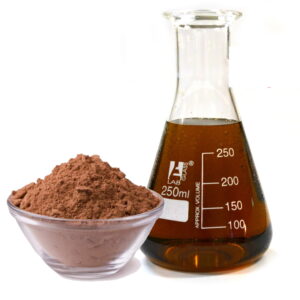Description
Description: Color group: brown. Inorganic, high-purity pigment. Insoluble, but miscible in water & oils. Particle size range 0.3-5.0 micrometer. Mean particle size 1.42 micrometer.
INCI Name: Iron oxide blend
EC / List no.: 257-870-1
CAS no.: 52357-70-7
Colour Index numbers:
Red 101 ci77491
Yellow 42 ci77492
Black 11 ci77499
Benefits:
Provides superior color purity and saturation
outstanding dispersibility, no aggregate formation.
Use: Can be tinted with titanium dioxide to create different beige shades.
Applications: All kinds of color cosmetics, personal care products, soaps, cement
Raw material source: Iron salts
Manufacture: Thermal decomposition of iron salts, precipitation of iron salts, and reduction of organic compounds by iron.
Animal Testing: Not animal tested
GMO: GMO free (does not contain plant-derived components)
Vegan: Does not contain animal-derived components
Contains:
Red 101 ci77491
Yellow 42 ci77492
Black 11 ci77499
What is the difference between a dye and a pigment?
Pigments
There are two different types of pigments: Natural and Synthetic. Pigments are insoluble materials that are ground into a fine powder so that they can be suspended in a binder (usually an oil). Insolubility means that pigments can never be dissolved into the binder, the fine particles of the powder are suspended and stay solid in the binder. The binder surrounds the pigment particles and holds them in place.Pigments produce paints that are more opaque than dyes and have low tinting strength. Opacity is the ability for paint to cover and hide another dried color that it has been applied over. Tinting strength is how well a color mixes with other colors. (Example: When mixing blue with white, how well does the blue disperse into the white? or How blue does the white look after the mixing?)The first colorants that were used to create paint were naturally occuring earthen pigments. Prehistoric people used ochres and iron oxides to create images on cave walls in Lascaux, France. Many natural insoluble pigments are still used today in artists’ paints. Metals are also natural insoluble pigments, like cadmium, titanium, and lead (very toxic).
Dyes
There two types of dyes: Natural and Synthetic. Dyes, in contrast to pigments, are soluble colorants. Solubility means that dyes are dissolved into a binder (usually water). Dyes are more transparent than pigments. Transparency of dyes makes these colors very good for glazing over previous layers of paint. Dyes have high tinting strength. A dye based paint, like pthalo blue, concentrates its own color when mixed with another color of paint, like titanium white.Dyes originally were derived from natural sources. Plants were primarily used to get dyes. Today some dyes are still organic, but many are created from synthetic materials. Indian Yellow is a good example of why synthetic dyes have replaced some naturally derived colors. The original Indian Yellow was made from dried elephant urine, but now it is considered inhumane to force an healthy diet onto an animal in order to influence the color of their urine. Today’s Indian Yellow is made from a synthetic dye.Please note that if you purchase a dye, it may come in either granular or powder form, depending on availability. We provide the granular for wherever possible, as it is easier to handle and produces less airborne dust.




